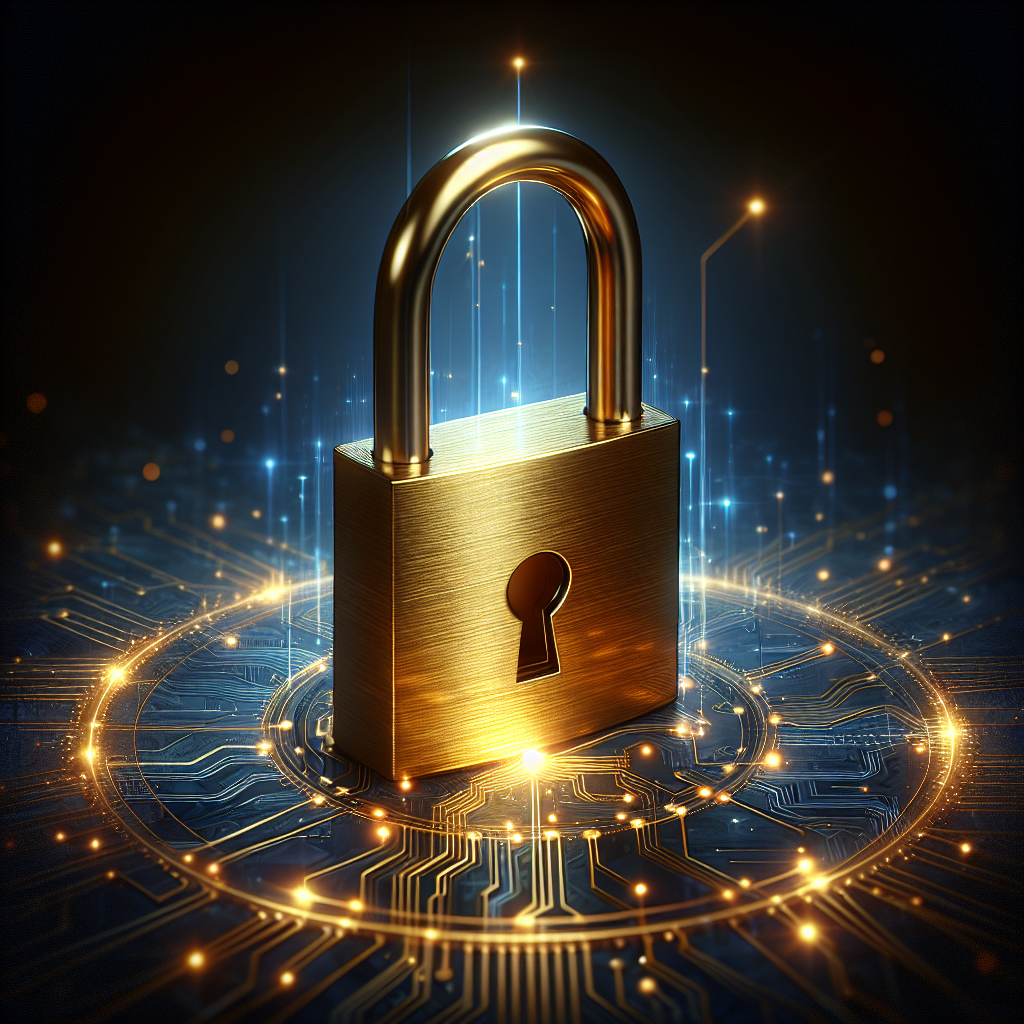In today’s digital age, customer support software plays a crucial role in ensuring seamless communication between businesses and their customers. But have you ever wondered about the security measures that are in place to protect your valuable data? With cyber threats becoming more sophisticated, it is essential to understand the security measures implemented by customer support software providers. From data encryption to secure access controls, this article will explore the various security measures in place to safeguard your information and provide you with peace of mind.

Data Encryption
End-to-End Encryption
When it comes to data protection, end-to-end encryption is a crucial security measure that ensures sensitive information remains secure from unauthorized access. This encryption method involves encrypting data at the source and decrypting it only at the intended recipient, making it virtually impossible for anyone else to intercept or decipher the data while it is in transit. By using strong encryption algorithms and secure keys, end-to-end encryption ensures the confidentiality and integrity of your data.
Transport Layer Security (TLS)
Transport Layer Security, commonly referred to as TLS, is a cryptographic protocol designed to establish a secure and encrypted communication channel between two systems. By utilizing TLS, customer support software can ensure that the data exchanged between the software and its users is encrypted and protected from interception. TLS operates by using digital certificates to authenticate the identity of the communicating parties and then encrypts the data being transmitted. This ensures that even if the data is intercepted, it cannot be deciphered without the appropriate decryption key.
Secure Sockets Layer (SSL)
Similar to TLS, Secure Sockets Layer (SSL) is another cryptographic protocol that provides secure communication over a network. SSL encrypts the data transmitted between a customer support software and its users, preventing unauthorized access or tampering of sensitive information. In the past, SSL was widely used to secure websites, but it has been largely replaced by TLS in recent years. However, the term SSL is still often used to refer to the general concept of secure communication protocols. When it comes to customer support software, SSL encryption ensures that any data sent and received remains confidential and protected.
Access Control
User Authentication
User authentication is a fundamental security measure that helps ensure that only authorized individuals can access customer support software and the sensitive data it contains. By requiring users to verify their identities through unique credentials, such as usernames and passwords, user authentication prevents unauthorized access and protects against potential data breaches. It is essential to choose strong password requirements and employ multi-factor authentication methods to enhance the security of user authentication.
Role-Based Access Control (RBAC)
Role-Based Access Control (RBAC) is a security measure that defines and restricts user access based on their roles and responsibilities within the organization. With RBAC, customer support software can assign specific permissions and access levels to different user roles, ensuring that individuals only have access to the features and data required for their job functions. This granular level of access control minimizes the risk of unauthorized access and reduces the potential for misuse or accidental disclosure of sensitive information.
Multi-Factor Authentication (MFA)
Multi-Factor Authentication (MFA) goes beyond traditional username and password combinations by adding an extra layer of security. MFA requires users to provide additional factors, such as a unique code sent to their mobile devices or a fingerprint scan, along with their credentials to gain access to customer support software. By combining multiple authentication factors, MFA significantly increases the difficulty for unauthorized individuals to access sensitive data, even if they have obtained the user’s credentials.

Audit Logs
User Activity Monitoring
User activity monitoring is an essential security measure that enables the tracking and recording of user actions within customer support software. By monitoring user activity, including logins, data access, and system configuration changes, audit logs provide a detailed record of who did what, and when. By examining these logs, organizations can detect and respond to any suspicious or unauthorized activities promptly. User activity monitoring plays a critical role in maintaining data security and ensuring compliance with regulations.
Record of System Events
In addition to monitoring user activity, maintaining a record of system events is crucial for identifying and addressing any potential security breaches or system vulnerabilities. System events include activities such as software updates, system restarts, error messages, and security alerts. Recording these events allows for the analysis of any irregularities, ensuring that any security incidents or potential weaknesses are promptly addressed. Keeping a comprehensive record of system events is a proactive security measure that enhances the overall security posture of customer support software.
Firewall Protection
Network Firewalls
Network firewalls play a vital role in protecting customer support software and its underlying infrastructure from unauthorized access and potential security threats. Network firewalls act as a barrier between the software’s internal network and external networks, monitoring and controlling incoming and outgoing network traffic based on predefined security rules. By filtering traffic based on parameters such as IP addresses, ports, and protocols, network firewalls effectively prevent malicious or unauthorized connections from reaching the customer support software and its associated data.
Host-Based Firewalls
While network firewalls protect the overall network infrastructure, host-based firewalls provide an additional layer of security by monitoring and filtering network traffic at the individual host or server level. Host-based firewalls are installed directly on the servers or endpoints of customer support software, allowing for more granular control over network communication. These firewalls ensure that only authorized network connections are established, minimizing the risk of unauthorized access or malicious activities from compromising the software’s security.

Secure Communication Protocols
Hypertext Transfer Protocol Secure (HTTPS)
Hypertext Transfer Protocol Secure (HTTPS) is an essential security measure that ensures secure and encrypted communication between customer support software and its users. By using HTTPS, data is encrypted before being transmitted over the network, preventing unauthorized individuals from intercepting or tampering with the information. HTTPS is particularly important when sensitive data, such as passwords or financial information, is being transmitted, as it ensures that the data remains confidential and protected throughout the communication process.
Secure File Transfer Protocol (SFTP)
Secure File Transfer Protocol (SFTP) is a secure alternative to the traditional File Transfer Protocol (FTP), commonly used for transferring files between systems. SFTP encrypts data while it is in transit, ensuring that sensitive files exchanged through customer support software remain secure and protected from unauthorized access or tampering. By utilizing strong encryption algorithms, SFTP adds an additional layer of security to file transfers, preventing potential data breaches.
Secure Shell (SSH)
Secure Shell (SSH) is a cryptographic network protocol that provides secure communication and remote administration capabilities. SSH is often used to establish a secure connection between client computers and servers, ensuring that sensitive data transmitted during remote support sessions remains confidential. By utilizing encryption and authentication mechanisms, SSH prevents unauthorized access and protects customer support software from malicious activities.
Regular Security Updates
Software Patches
Regularly updating customer support software with the latest software patches is a crucial security measure that helps protect against known vulnerabilities and exploits. Software vendors regularly release patches that address security flaws and improve the software’s overall integrity. By promptly applying these patches, organizations ensure that their customer support software remains up-to-date and secure, mitigating the risk of potential security incidents.
System Upgrades
In addition to software patches, system upgrades are equally important for maintaining the security of customer support software. Upgrading the software’s underlying infrastructure, including operating systems, databases, and server hardware, helps ensure that the software remains compatible with the latest security protocols and features. System upgrades not only enhance the overall performance and stability of the software but also strengthen its security posture by leveraging up-to-date security technologies.
Data Backups and Recovery
Periodic Backups
Data backups are an essential security measure that ensures the availability and recoverability of critical data in the event of data loss or system failures. By performing periodic backups of customer support software data, organizations can minimize the potential impact of data breaches, hardware failures, or human errors. These backups serve as a safeguard, allowing for quick and efficient data recovery, ensuring that customer support operations can resume without significant disruptions.
Disaster Recovery Planning
Having a comprehensive disaster recovery plan is crucial for customer support software to effectively respond to and recover from catastrophic events that could potentially compromise the availability and integrity of data. A disaster recovery plan outlines the necessary steps and procedures to be followed in the event of a disaster, such as natural disasters, cyberattacks, or system failures. By identifying potential risks, establishing backup procedures, and regularly testing the plan, organizations can ensure that customer support software remains operational and secure, even in the face of unforeseen circumstances.
Redundant Infrastructure
Multiple Data Centers
Implementing multiple data centers is a robust security measure that ensures the availability and reliability of customer support software. By spreading data across geographically diverse data centers, organizations can minimize the risk of data loss or downtime caused by a single point of failure. Multiple data centers allow for redundant systems and backup processes, ensuring that customer support software remains accessible and operational even if one data center experiences a failure or disruption.
Load Balancing
Load balancing is a technique used to distribute network traffic evenly across multiple servers or data centers. By implementing load balancing for customer support software, organizations can ensure optimal performance and availability while mitigating the risk of server overload or network congestion. Load balancing allows for efficient resource utilization, ensuring that user requests are evenly distributed and processed by the available servers, enhancing both performance and security.
Vulnerability Assessments and Penetration Testing
Identifying Weaknesses
Regular vulnerability assessments and penetration testing are crucial security measures that help identify weaknesses and potential vulnerabilities within customer support software. Vulnerability assessments involve systematic scans and tests to identify any security flaws or misconfigurations that could be exploited by attackers. Penetration testing takes the assessment a step further by simulating real-world attacks to evaluate the strength of the software’s security measures. By identifying weaknesses proactively, organizations can take appropriate measures to address and strengthen their customer support software’s security.
Simulating Attacks
Simulating attacks through penetration testing allows organizations to gain insights into potential security vulnerabilities and measure the effectiveness of their security measures. By performing controlled and authorized attacks on customer support software, organizations can test the software’s defenses and identify any potential weaknesses. Simulating attacks provides valuable information about the software’s ability to withstand different types of attacks, enabling organizations to improve and fine-tune their security measures.
Compliance with Security Standards
Payment Card Industry Data Security Standard (PCI DSS)
For organizations handling payment card information, complying with the Payment Card Industry Data Security Standard (PCI DSS) is essential. PCI DSS is a set of security standards designed to protect cardholder data and ensure the secure processing of payment transactions. By adhering to PCI DSS requirements, customer support software can establish robust security controls, including encryption, access controls, and regular security testing. Compliance with PCI DSS not only enhances the security of customer support software but also helps build trust with customers and reduces the risk of financial losses due to security breaches.
General Data Protection Regulation (GDPR)
The General Data Protection Regulation (GDPR) is a comprehensive data protection regulation that applies to organizations processing personal data of individuals within the European Union. Compliance with GDPR is crucial for customer support software to protect the privacy and confidentiality of customer data. GDPR mandates a variety of security measures, including data encryption, user consent, data breach notification, and access controls. By complying with GDPR requirements, organizations can safeguard personal data, maintain trust with customers, and avoid hefty fines and penalties resulting from non-compliance.
In conclusion, customer support software employs various security measures to ensure the confidentiality, integrity, and availability of data. From data encryption and access control to secure communication protocols and regular security updates, these measures collectively create a robust security framework. Combined with audit logs, firewall protection, data backups, redundant infrastructure, vulnerability assessments, and compliance with security standards, customer support software can offer a safe and secure environment for interacting with users and handling sensitive information. Implementing these security measures is essential to protect not only the software itself but also the trust and confidence of customers.
